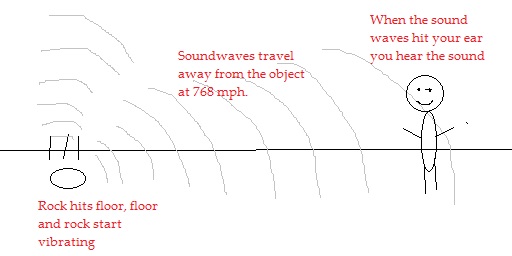Beginner Music Theory For Guitar
In order to understand how music works, you need to first understand a little about sound.
Amplitude
When one object strikes another object, both objects start to vibrate. This vibration moves air molecules toward your ears (visualize the ripples in water after you throw a rock into a lake, but the waves move way from the object in every direction). These “sound waves” hit your eardrum and you hear a sound. The more the object vibrates the more air that is moved, resulting in a louder sound. We call this Amplitude.
Frequency
Frequency is the speed at which something vibrates. Every object, depending on its composition, will vibrate at its own frequency. Most of the time you can’t see the vibrations, but it is possible to see vibrations by looking at home speaker cones, guitar strings, or a rubber band. If you pluck the rubber band as you pull it tighter you will notice that the tighter it gets, the faster it vibrates. You will also notice that the faster it vibrates the higher the pitch. We measure the speed of the vibrations using something called Hertz per second. 1 hertz (or 1hz) = 1 vibration per second. The average human ear will detect sounds that are between 20 hertz (20hz) and 20,000 hertz (20khz). We call this the Audible Frequency Range.
Interesting facts:
Timbre
The sound that an object makes when it vibrates is almost never just one single frequency, but a large number of frequencies at once. This is a large and hard to explain topic, but it might help to you understand if you remember that this is how we tell the difference between a trumpet and a saxophone if they play the same note. It is called Timbre.
Interesting facts:
That’s all for today, next time we will see what this has to do with music and music theory. I do encourage you to look into these ideas further, especially if you are interested in audio recording or sound syntheseis.

My website designed to help songwriters get free reviews of their songs getmysongreviewed.com
If you are interested in a great course to learn piano Pianoforall
